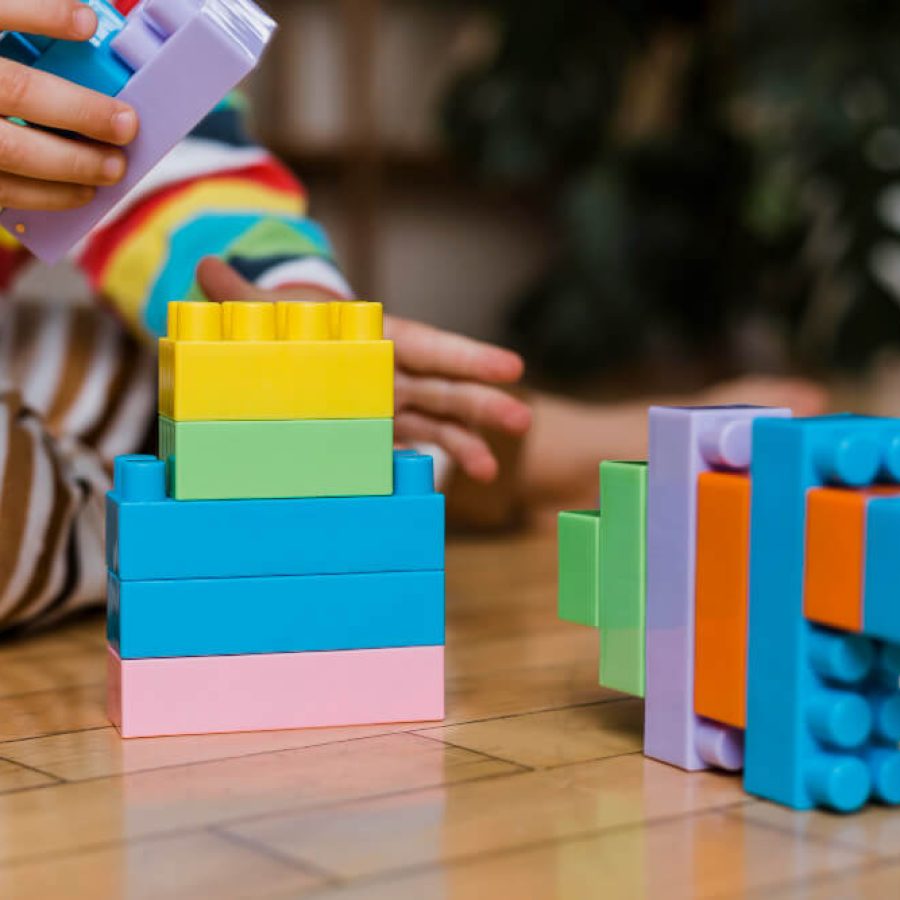If you’re looking for a fun activity that keeps children entertained, doesn’t involve screen time, and that you can progressively see your child evolve on, here’s an idea: playing with blocks!
Blocks are safe, multipurpose, great for your kid’s whether on playdates or by themselves… Also, it brings a great opportunity for open-ended play, where there are no rules and kids get to explore different ways around that object.
Why Play with Blocks Matters
If you have a baby or child at home, you know how they work their way around: everything is new, so each interaction is an opportunity to explore.
By relying on their senses, they get to form new connections and elaborate on something yet undiscovered.
Specifically on blocks, these are objects that offer a wide range of possibilities. Playing with blocks means the children get to stack them together, block bowling, combine patterns, use them in the pool or during bath time, and so on.
When using age-appropriate toys, playing with blocks is safe, fosters their imagination, keeps them engaged and stimulates them to use their whole selves into play—since there’s a physical engagement on playing with blocks, as well as a cognitive stimulus.
How to Play with Blocks at Different Stages
Regardless of the child’s age, the most important part of playtime is ensuring the toys are suited for their current development stage.
It means that blocks for infants are softer, safe to put in their mouths (we just know they’ll snap it there!) and lightweight.
As kids get older, it’s safer to use blocks that are more rigid and stack differently because this opens a whole new world of building opportunities!
So let’s take a look at how Little Ones can play with blocks at each stage.
Infants
At this stage, play is all about sensory exploration.
- Soft, textured blocks that are easy to grasp help babies develop fine motor skills and hand-eye coordination.
- Since infants explore with their mouths, make sure the blocks are safe and washable.
- Let them knock down small stacks or squeeze the blocks to hear fun sounds. These simple actions lay the groundwork for understanding cause and effect.
Toddlers
At this stage, block play becomes more intentional.
- Encourage stacking, knocking things down, and sorting blocks by color or shape.
- Offer larger, sturdy blocks that are easy to handle.
- Encourage them to build towers or simple structures, helping them improve balance, coordination, and spatial awareness.
Preschoolers
Now it’s time for imagination to take center stage! Also, this kind of play boosts problem-solving, planning, and creativity.
- Preschoolers can use smaller, more detailed blocks to build houses, vehicles, or even entire cities.
- They often play with a purpose and enjoy storytelling around their creations.
- It’s also a great moment to introduce basic math and science concepts like symmetry, size comparison, and balance.
Encouraging Interactive Play Using Blocks
If you’ve been to our blog before, you know our team at AEA is a big defender of quality family time!
So here’s what we suggest for parents that are looking to make the best use of their moments with kids while playing with blocks.
- Ask questions: show you’re interested in what they are doing. Also, having the child explain their actions is a great strategy to stimulate communication skills.
- Build your own version: showing the child how you’d stack the blocks or build something means presenting them a different perspective—which is enriching as they are growing their own cognitive repertoire.
- Invite collaboration: suggest building something together—a house, a bridge, a zoo. This encourages teamwork and problem-solving, and also helps children practice taking turns and sharing ideas.
- Introduce storytelling: turn the block creations into part of a story (maybe the tower is a castle or the bridge leads to a magical land!). This sparks creativity and helps children connect play with language and imagination.
You’re off to a wonderful time with your children while playing with blocks! Use these resources as inspiration and create something that fits your reality at home.
Want to dig deeper as to why blocks are such a fun activity? Move on to our next recommended read: What is Sensory Play?


